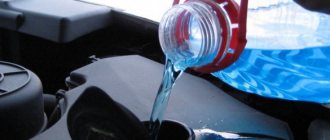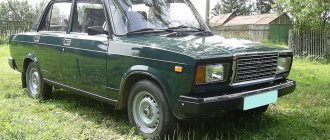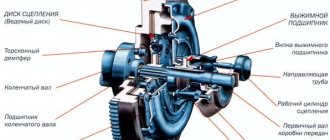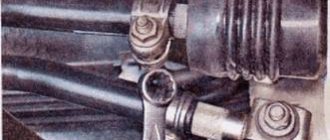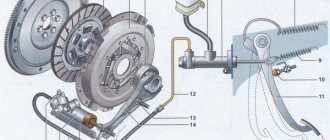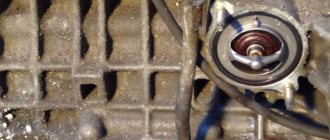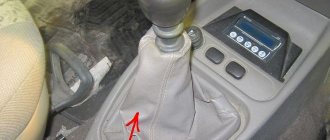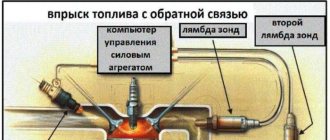What is a clutch in a car
The clutch in the design of a vehicle serves as an intermediary between the engine and the gearbox.
Allowing smooth transfer of power from the engine flywheel to the input shaft of the gearbox. Next, all the power from the power unit goes to the wheels. Thanks to the clutch, power is transferred to the wheels in increasing order, and not in its entire volume at once. This allows you to preserve the integrity of many elements of the engine and transmission, and also increases driving comfort, thanks to a soft start and imperceptible gear changes. Also, the clutch plays the role of a fuse, which takes all the power upon itself during heavy braking. And it prevents the transmission from receiving a sensitive blow, thereby saving the car owner from inevitable repairs.
Today, thanks to the constant work of engineering in the development departments of automakers, there are many options and clutch mechanisms that differ in some design elements, but are built on a single principle of torque transmission.
To explain it in simple words, the principle of operation of the clutch can be described as follows: the device itself is made in a metal case, called a basket, which is attached to the flywheel of the power unit. At the same time, inside the basket there is a clutch disk that interacts with the input shaft thanks to a splined connection, and the engine flywheel through the drive disk and special elements on it with an increased coefficient of friction. In normal mode, all discs are pressed tightly against each other, and the power from the engine flywheel is transmitted in full to the input shaft. But when you press the clutch pedal, the downforce of the springs decreases and the discs separate, thereby stopping the power supply.
The clutch is divided according to several features, one of them is the operating environment of the discs - dry or wet. In this case, a scheme with a dry type of power transmission is most often used. This design is easier to manufacture and operate, since no additional oil bath is required.
You can also distinguish the mechanism by the principle of operation of the clutch pedal. Sometimes, the downforce of the springs in the basket can be high, so various options for lightening the pedal are invented. At the moment, mechanical, hydraulic, electrical or a combination option is used.
By design, we can note some of the main elements of the mechanism - these are the clutch disc, the pressure plate (standing inside the basket and transmitting torque from the engine flywheel), the release bearing, the bearing drive fork and the entire structure of interaction of the clutch with the pedal in the cabin.
Separately, automatic transmissions can be distinguished. These devices have different design features, including different types of clutch, or no clutch at all.
But if the design includes a clutch (usually in robotic gearboxes), then a wet circuit is used, and pressing the pedal or switching gears is simulated using electric servos or hydraulic mechanisms.
Also, “automatic machines” can have a multi-disc clutch or a double clutch that works in turn. In this case, there is a clutch of a standard design and an additional one inside the gearbox.
A little about the device and purpose
The clutch is the main mechanism of a car's transmission, allowing us, without stopping the engine, to move away smoothly and change the intensity of traffic, changing gears while driving.
On passenger cars, single-plate friction clutches with a hydraulic drive are predominantly installed. The mechanism, located outside and inside the basket-casing, bolted to the flywheel, consists of the following parts:
- flywheel;
- driven and driven disks with friction linings;
- springs pressing the drive disk to the flywheel;
- clutch release forks;
- release levers;
- push clutch;
- release bearing;
- pedal shaft and clutch pedal.
How much does it cost to replace a clutch at a service center?
If, after reading the instructions, you have any doubts about carrying out the work yourself, you can always contact the services. The cost of replacement may vary depending on the city, but on average it is about 1500-2000 rubles. This price includes replacement of the clutch basket, disc and release bearing. Note that the work can be done without a hole, so almost any car service will carry out this procedure in a couple of hours.
Depending on the urgency of the repair, you can try to make a replacement yourself. The only thing that requires experience in this procedure is adjusting the cable. Services charge no more than 200 rubles for this procedure. The work is not difficult, so any service technician can handle it.
Signs of a bad clutch
Problems with the clutch disc itself or associated parts can cause a variety of symptoms.
- Your car may run poorly: it may start to move slowly when you engage a gear, or it may jerk at low speeds, especially when starting in first gear. Or it may be difficult to force the car into reverse or into gear at all.
- Noises may indicate a problem: your pedal may be making noise, or your transmission may be making noise when the car is in neutral. You may hear a squealing or growling sound when you press the pedal, or a rustling sound when you change gears.
- The pedal may give you clues: it may vibrate, wobble or pulsate, be stiff and difficult to press, or sag and not return to its original position. Below I discuss all of these symptoms and tests you can do yourself to diagnose.
This is interesting: Diagnostics and repair of the ABS sensor on a car
Nine clutch device
The clutch kit is one of the key components of the Nine transmission. This is a single-disc friction-type mechanism located between the engine and the gearbox (gearbox). The algorithm for its operation is as follows:
- Initially, the car is stationary, the engine is started, the pedal is released. The gearshift lever is in the neutral position, that is, the rotation of the input shaft is not transmitted to the secondary shaft.
- The driver is preparing to move forward. With his left foot he presses the pedal, and the mechanism disconnects the gearbox input shaft from the engine. The driver moves the lever to the first gear position, the mechanism ensures the engagement of the primary and secondary shafts of the gearbox. The car is stationary because the engine is disconnected from the transmission input shaft.
- The driver smoothly but decisively releases the pedal. The engine is connected to the input shaft, the task of which is to transmit power to the drive wheels through the secondary shaft, then the car will start moving.
- Switching from first gear to second, from second to third, and so on occurs in the same way.
The VAZ 2109 clutch design is such that when the pedal is released, the driven disk is clamped by springs between the flywheel and the pressure plate. In this case, power is transferred to both gearbox shafts and the drive wheels. When you press the pedal, the VAZ 2109 clutch fork rotates through a special rod and presses on the levers that retract the pressure plate. The VAZ 2109 clutch driven disc is disconnected and power transmission stops. The mechanism casing is connected to the pressure plate by three pairs of elastic plates. The unit is driven by a cable, its lower tip is fixed with nuts in a bracket on the engine crankcase.
The clutch cable is connected to the clutch release fork lever.
Clutch does not work: possible reasons
The main problem is wear of the clutch disc, since this is the most loaded element.
However, clutch malfunctions can be associated not only with the disc and arise for a variety of reasons.
Clutch drive
In the clutch drive device with a cable, it is the cable that often stretches and breaks. The clutch hydraulic drive may become airy or leaking, and the slave cylinder may also fail.
On robotic boxes with electric drive, the actuator electric motor becomes unusable, and malfunctions in the operation of the control unit also occur.
Clutch mechanism
As for the clutch itself, the release bearing and pressure plate often fail, and the pressure plate diaphragm spring becomes deformed or breaks.
We also recommend reading the article on how to change the clutch fork without removing the gearbox. From this article you will learn about available methods for installing the clutch fork without removing the gearbox.
The driven disc also suffers, since the friction linings are worn out or damaged, oil gets on them, the disc hub gets stuck on the splines of the gearbox shaft, and the damper springs wear out and break.
Diagnosis of problems
The clutch does not disengage (“drive”)
When the discs do not move completely apart when you press the pedal, they say the clutch is “driving.” That is, the disks remain in some contact, and it does not turn off completely. Experienced drivers know how to check the clutch for incomplete disengagement. Diagnosis is simple. If at low speeds with the pedal pressed all the way, first gear is engaged easily and without extraneous noise, the shutdown occurs completely. If switching occurs with difficulty and is accompanied by gear noise, it “drives.”
The reasons for this may be:
a) mechanical
- the driven disk linings are broken or the rivets on them are loose;
- decrease in full pedal travel (tight clutch);
- the driven disk is warped and its end runout exceeds 0.5 mm;
- the pressure plate is warped or warped;
- the hub of the driven disk jams on the splines of the input shaft in the gearbox;
- the rivets securing the pressure spring are loose;
- irregularities have formed on the surface of the friction linings of the driven disk.
b) associated with hydraulic drive
- fluid leakage from the hydraulic system;
- air has entered the system.
Elimination of mechanical causes involves adjusting the drive, cleaning and lubricating the splines, straightening or replacing the driven disk and, most often, replacing the friction linings. Every clutch has to be replaced at some point. Problems in the hydraulic system require bleeding to remove trapped air, checking the tightness of connections and the integrity of the pipeline. If necessary, you will have to replace failed parts, such as the main and working cylinders if fluid leaks from them.
Does not turn on (“slips”)
When, while driving, you begin to smell a burning smell, and on a climb your car noticeably slows down and generally begins to accelerate worse, you don’t even need diagnostics: the clutch is slipping. This means that the driven and driven discs do not close tightly enough when the clutch is engaged. There is an easy way to check the clutch. To do this, put the car on the parking brake and start the engine. Squeeze the clutch and engage the gear. Smoothly press the gas pedal and just as smoothly release the clutch. The engine should stall. If it continues to work, it means the clutch is slipping.
Reasons for incomplete inclusion:
- there is no free play of the pedal;
- the friction linings of the driven disk are burnt or worn out;
- oil has got or continues to get on the friction linings, on the surface of the pressure plate and flywheel.
These reasons can also be eliminated by adjusting the drive and replacing the linings. Oil that gets on the rubbing surfaces, which results in a slipping clutch, must be removed by thoroughly washing the contaminated areas with white alcohol. Of course, it is necessary to find out and eliminate the reason for its appearance.
This is interesting: What to do if the smell of gasoline appears in the car interior
Checking clutch wear
It’s quite easy to check the degree of wear of the driven disc and understand that the clutch needs to be changed. In particular, you need:
- Start the engine and engage first gear.
- Without accelerating, try to move off and check the condition of the clutch disc.
- if the clutch “grabs” at the very beginning, it means that the disc and clutch as a whole are in excellent condition;
- if “seizing” occurs somewhere in the middle, the disc is worn out by 40...50% or the clutch requires additional adjustment;
- if the clutch is sufficient only at the end of the pedal stroke, it means that the disc is critically worn out and requires replacement. Or you simply need to adjust the clutch using the appropriate adjusting nuts.
Malfunctions and their treatment
Below are all the symptoms of a faulty clutch and methods of treatment.
Clutch slipping
Let's start with the most common symptom, when the clutch slips or does not engage fully. The engine starts to gain speed, but the car does not accelerate. This is especially noticeable by the driver of the vehicle when driving uphill and on slopes. In this case, you may even smell the friction linings, as if the brake pads are faulty. Plus, fuel consumption increases significantly. So, the situation described above can occur due to the following faults:
- the flywheel, pressure plate or linings may become oily;
- The friction linings of the disc may be severely worn out or burnt;
- The clutch drive may be damaged.
Oiling
VAZ 2110 signs of clutch malfunction - flywheel oiling
In order to “cure” the clutch if the flywheel, linings or disc are oily, you will have to do the following:
- take white alcohol or gasoline;
- Thoroughly rinse oily surfaces with this product.
Note. If the driven disk or HP is very oily, then it would be better to replace it, since cleaning will not help in this case.
- eliminate the cause of oiling (in the car there may be a lubricant leak through the gearbox or engine seals).
Wear or burning of FN
If the friction linings are worn out, the FN is short, or they show signs of burning, then the following should be done:
- replace the HP assembly, since nothing else will help.
Clutch drive
If the clutch drive sticks or is damaged, you need to:
- eliminate the cause of jamming;
- replace the drive if the first method does not help.
Clutch not fully disengaging
VAZ 2110 clutch slips
It is also a fairly common symptom when the clutch is slipping. In this case, it is always difficult to change gears, mainly, as mentioned above, first gear or reverse. In addition, a characteristic noise is heard when switching on, but the gearbox is fully operational.
Incorrect clutch adjustment
The most common reason. In this case you need:
- adjust the clutch drive;
- replace the deformed fork.
Clutch cable gets stuck
VAZ 2110 clutch slips
In this case you will have to:
- lubricate the clutch cable with engine oil or other means;
- If it doesn’t help, and the cable is too frayed, replace it.
Loosening of FN rivets or warping of the clutch HP
In this case, the only solution that will help is to replace the disk.
Seizure on the flywheel surface
In this case you should:
- if severe and uneven wear is observed, replace the flywheel;
- if the pressure disk is damaged, then the casing along with the disk assembly should be replaced (in simple words, replace the basket).
High pressure clutch hub stuck
VAZ 2110 clutch slips
This is also a common phenomenon and the following will help in this case:
- the splines are cleaned of dirt and minor damage (a needle file is used);
Clutch malfunctions and their elimination
- If significant wear is observed, the clutch disc is replaced.
Note. In some cases, it is not even the disc itself that is replaced, but the gearbox input shaft.
Skew or warping of ND
VAZ clutch pressure plate
The pressure plate, briefly called ND, may have warping and skew elements on its surface. In this case, only replacing the clutch basket will help.
Spring and petal wear
It is also an equally common phenomenon when wear of the spring petals is observed in the place where it comes into contact with the bearing. Again, nothing other than replacing the basket will help in this case.
Jerks at start
As mentioned above, another well-known clutch disease is the fact that when starting off, the car jerks. There may also be several reasons in this case.
Drive cable gets stuck
Again, the drive cable may jam, as if the clutch is slipping. In this case you should:
- lubricate the cable with engine oil;
- If that doesn’t help, then replace the cable.
HP hub and its jamming on splines
Recommended:
- clean the splines from dirt and minor damage using a file;
- if significant wear is observed, the HP or input shaft must be replaced.
Note. Before assembling the hub, do not forget to apply lubricant to the splines. CV joint-4 is ideal in this case.
How to repair a car clutch
This article is for informational purposes only, so it will not contain exact instructions on how to replace the clutch, but a few tips will not hurt. First of all, it is worth reminding inexperienced car owners that contacting a trusted technical inspection station is a guaranteed high-quality and fastest possible repair. Naturally, it will cost more, but if you take into account the time spent on independent repairs, especially if the car is an assistant in earning money, then this will be the most profitable solution. First of all, you need to decide whether the breakdown occurred in the mechanism itself or in the clutch pedal mechanism and its drive. This will vary the complexity and duration of the repair. And also, it will be less offensive if you disassemble the entire mechanism and it turns out that a jammed clutch cable is to blame for the malfunction.
If you decide to repair it yourself, you can purchase in advance the entire set of the clutch mechanism - basket, disc and release bearing. Of course, only one part can come out of the clutch, but you have to agree. If the car has already traveled 200,000 kilometers, and only the disc needs to be replaced, then after a short time. The transmission will have to be disassembled again to replace other mechanisms. That's why. A new kit should be installed immediately for reliable repairs.
Also, you should not crawl under the car and unscrew all the bolts in a row. Before repairs, it is advisable to study in detail all the necessary information on dismantling, installing and adjusting the clutch on your car model. It is in this case that a beginner in the repair business will be able to perform high-quality car repairs that will last for a long time.
Clutch basket malfunctions
Failure of the clutch basket elements can be expressed in the following:
- Noise when pressing the clutch pedal. However, this symptom may also indicate problems with the release bearing, as well as with the driven disk. But you need to check the elastic plates (so-called “petals”) of the clutch basket for wear. If they are significantly worn out, repair is impossible, but only replacement of the entire assembly.
- Deformation or breakage of the pressure plate diaphragm spring. It needs to be inspected and, if necessary, replaced.
- Warping of the pressure plate. Often simply cleaning helps. If not, you will most likely have to change the entire basket.
Clutch disc malfunction
Problems with the driven clutch disc result in the clutch “driving” or “slipping.” In the first case, for repair it is necessary to perform the following operations:
- Check the drive disk warpage. If the value of the end warpage is equal to or greater than 0.5 mm, then the pad on the disk will constantly cling to the basket, which will lead to a situation where it will constantly “lead”. In this case, you can either get rid of the warping mechanically, so that there is no end runout, or replace the driven disk with a new one.
- Check for jamming of the driven disk hub (that is, misalignment) on the splines of the transmission input shaft. You can get rid of the problem by mechanically cleaning the surface. After this, it is allowed to apply LSC15 lubricant to the cleaned surface. If cleaning does not help, you will have to change the driven disk, or in the worst case, the input shaft.
- Oil getting on the driven disc causes the clutch to slip. This usually happened with older cars where the seals are weak and engine oil can leak from the engine onto the disc. To eliminate it, it is necessary to inspect the seals and eliminate the cause of the leak.
- Friction lining wear. On old disks it could be replaced with a new one. However, nowadays car owners usually change the entire driven disk.
- Noise when pressing the clutch pedal. If the damper springs of the driven disk are significantly worn, a grinding or clanging noise may occur from the clutch assembly.
This is interesting: Causes of black spark plugs: carburetor, injector
Release bearing failure
Clutch release bearing: principle of operation, symptoms of malfunction
The clutch release bearing in the gearbox is engaged when the driven disk is separated from the drive disk. Having learned the principle of operation, you can understand the signs and causes of the malfunction, and also check it yourself Read more
Diagnosing a faulty clutch release bearing is quite simple. You just need to listen to its operation while the engine is idling. If you press the clutch pedal all the way in neutral and an unpleasant clanging sound comes from the gearbox, the release bearing has failed.
Please note that it is advisable not to delay replacing it. Otherwise, the entire clutch basket may fail and you will have to replace it entirely with a new one, which is much more expensive.
Clutch master cylinder malfunctions
One of the consequences of a malfunctioning clutch master cylinder (on machines that use a hydraulic system) is clutch slipping. In particular, this happens because the compensation hole is significantly clogged. To restore functionality, it is necessary to inspect the cylinder, dismantle and wash it and the hole. It is also advisable to verify the overall performance of the cylinder. We drive the car into the inspection hole, ask an assistant to press the clutch pedal. When pressing with the system working, you will see from below how the master cylinder rod pushes the clutch system fork.
Also, if the clutch master cylinder rod does not work well, then the pedal, after pressing it, may return very slowly or not at all to its original position. This can be caused by prolonged idle time of the machine in the fresh air, thickened oil, or damage to the cylinder surface mirror. True, the reason for this could be a failed release bearing. Accordingly, to fix the problem, it is necessary to dismantle and inspect the master cylinder. If necessary, you need to clean it, lubricate it and, preferably, change the oil.
Another failure associated with the master cylinder in the hydraulic clutch system is that the clutch disengages when the drive pedal is suddenly pressed. Reasons for this and solutions:
- Low fluid level in the clutch system. The solution is to add fluid or replace it with a new one (if it is dirty or according to regulations).
- Depressurization of the system. In this case, the pressure in the system decreases, which leads to abnormal operation.
- Damage to elements. Most often - the working cuff, but possibly the mirror of the clutch master cylinder. They need to be inspected, repaired or replaced.
Clutch pedal malfunctions
The reasons for the clutch pedal not working correctly depend on which clutch is used - mechanical, hydraulic or electronic.
If the car has a hydraulic clutch and at the same time it has a “soft” pedal, then the system may become air-tight (the system has lost its tightness). In this case, you need to bleed the clutch (expel the air) by replacing the brake fluid.
On a mechanical clutch, often the reason that the pedal falls “to the floor” is that the clutch fork has worn out, after which it is usually put on the hinge. Such a breakdown is usually repaired by welding on the part or simply by adjusting it.
The VAZ 2109 clutch is slipping - what to do?
Clutch VAZ 2109
Usually the VAZ 2109 clutch slips due to deterioration of the vehicle’s traction capabilities. This can also lead to a decrease in speed and difficulty driving on difficult roads. If the clutch on a VAZ 2109 is slipping, you should urgently repair it.
What causes the clutch to slip?
The most well-known causes of car slipping:
- the pedal does not move freely;
- friction linings are worn out;
- rubber parts are swollen.
In order to eliminate or prevent clutch slipping, you first need to check the clutch pedal travel. If necessary, it is adjusted.
Friction linings worn down to rivets
VAZ 2109 clutch slips
The reasons for this problem may be:
- normal wear taking into account operating conditions;
- errors when driving a car, pressing the gas pedal from a standstill;
- poor clutch system movement;
- Incorrect installation or adjustment of the clutch drive.
Note! In such a case, the clutch is compressed with insufficient force.
The elasticity of the pressure plates is lost
VAZ 2109 clutch slips
Clutch disc slipping can occur when the pressure springs are weakened or faulty. This can also occur due to wear or warping of the friction surfaces of the flywheel with the pressure disk.
Note! If the friction linings of the driven disk are oily, then they, along with the faulty pressure plates, are replaced with new ones.
The rubbing surfaces of the flywheel with the pressure disk are processed using grinding. If, when moving the car, there is a smell of burning linings, there is slight acceleration, a decrease in speed, or a slow crossing of hills, then the reason is most likely hidden in the clutch; it may not be fully activated. If the engine turns off, the clutch will work normally, but if this does not happen, then we can conclude that the clutch is slipping.
VAZ 2109 clutch slips
In the best case, it is also recommended to replace friction linings when cracks, burns and scuffs are detected on the surface. Clutch slippage can sometimes occur due to swelling of the rubber elements of the hydraulic drive. Such a defect most often occurs due to the use of low-quality brake fluid, or the composition does not meet the standards. Penetration of mineral oils, kerosene or gasoline into the liquid is not excluded. To fix this problem you need to:
- dismantle the functioning and main hydraulic drive;
- disassemble the system;
- rinse it with purified brake fluid;
- replace swollen parts;
- clean the expansion hole;
- Fill with clean, high-quality liquid.
The elasticity of the pressure plates may disappear due to long-term operation. This can also happen due to insufficient pressure on the disk (driven). It is recommended to check the condition of the plates at a car repair shop, since it is impossible to do without the use of special instruments and devices. As a rule, weakened springs need to be replaced. This also applies to friction lining oil.
Oily or greasy friction linings
This problem can happen for several reasons:
- if the gearbox or engine seal is damaged;
- in case of excess lubricant on the gearbox shaft or on the crankshaft;
- if the seal of the hydraulic drive is broken.
Note! As a result, the friction coefficient of the linings is reduced.
If, during normal movement of the pedal, the clutch still slips, then, most likely, oil has got on the linings. It is necessary to dismantle the clutch and check the driven disc with linings for oiling. Typically, oil penetrates the disc and linings due to its excess in the gearbox, as well as due to contamination of the flywheel drainage gap. To remove oil from the pads, they need to be washed thoroughly with kerosene or gasoline. After this, the parts are wiped dry and cleaned with sandpaper. If the driven disk is very oily, it must be changed; this also applies to the set of friction linings. Next, you need to set the gearbox to a normal oil level and clean the flywheel clearance.
Friction lining burning or peeling
Clutch slips in VAZ 2109
Burning or peeling can happen due to:
- frequent clutch slipping;
- "acceleration" from a standstill in high gear;
- excessively low clutch squeezing force;
- malfunctions or defects in the clutch activation system or due to the lack of clearance that should form between the clutch release lever and the bearing;
- oiling and salting;
- excessive flywheel depth, this may be a tuning error.
Note! In these cases, overheating can occur, leading to significant damage to the pads.
Friction linings do not absorb the load over their entire surface
The reasons for this feature include:
- flywheel malfunction;
- presence of scratches on the friction surface.
As a result, the friction coefficient of the linings may decrease.
Note! The friction lining on the new disk first takes up the external load, while ensuring the full load of the replaced parts is ensured before general development.
Pressure plate overheating
Overheating can occur for several reasons:
- due to frequent clutch slipping;
- when salted or oily;
- due to a breakdown or defect of the clutch or due to a small gap between the clutch release lever and the clutch bearing;
- if the flywheel depth is significantly greater than normal.
If one of the reasons is present, the friction coefficient of the linings may decrease. Constant slipping affects the increase in heat absorption capacity. The result is overheating.
Severe wear on the diaphragm spring limbs
This can happen in cases where:
- the drive system wears out;
- the guide tube has worn out;
- The bearing is subject to too much load.
The effectiveness of the clutch squeezing force is blocked due to freezing of the release bearing, and it can also be partially reduced due to a high initial load.
Broken diaphragm spring
Vase pressure disk
Fracture of the element can occur due to high compression forces or the permitted clutch disengagement stroke. In such a situation, the spring may lose its own design parameters.
Note! The clutch may disengage when the pressure plate is pressed slightly.
If possible, the problem with slipping should be solved immediately, as soon as the first causes are discovered. Otherwise, when driving on difficult roads, there will be a risk of engine failure. If you cannot identify the cause of the car slipping yourself, you need to contact a car service. If the cause is still identified through video and photos, you can try to fix the problem yourself. For easy work on the network, there are instructions for repairing a particular element. Since the price of services at service stations is constantly growing, many people prefer to repair their car themselves.
How to avoid clutch problems?
To extend the life of the clutch, it is enough to follow a few simple rules. Firstly, you need to ensure that it is adjusted correctly, otherwise the clutch can either “drive” or “slip”. Secondly, you should not overload the clutch - for example, skidding intensively and for a long time in snow or mud, starting abruptly, changing gears with the clutch pedal not fully depressed, keeping it half-depressed, and so on. Finally, you should be wary of requests to “tow,” especially if the clutch condition is unknown and the weight of the vehicle being towed is similar to or greater than the weight of your own vehicle. Of course, the clutch can fail due to simple wear and tear or a manufacturing defect, but often the one who presses the leftmost pedal is to blame for its premature death.
Sources
- https://carsweek.ru/articles/kak-ponyat-chto-stseplenie-vyshlo-iz-stroya/
- https://ZnanieAvto.ru/mufta/neispravnosti-scepleniya.html
- https://santavod.ru/propalo-sczeplenie-prichiny-neispravnosti-priznaki/
- https://KrutiMotor.ru/neispravnosti-stsepleniya-priznaki-i-prichiny/
- https://etlib.ru/blog/1137-neispravnosti-stsepleniya
- https://www.kolesa.ru/article/kak-rabotaet-stseplenie-kakovy-ego-tipichnye-neispravnosti-i-kak-ih-izbezhat
[collapse]

